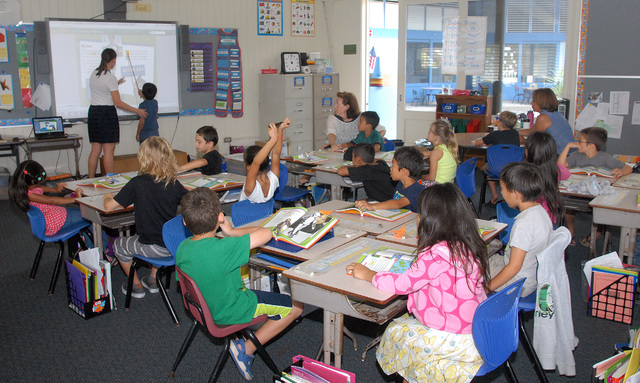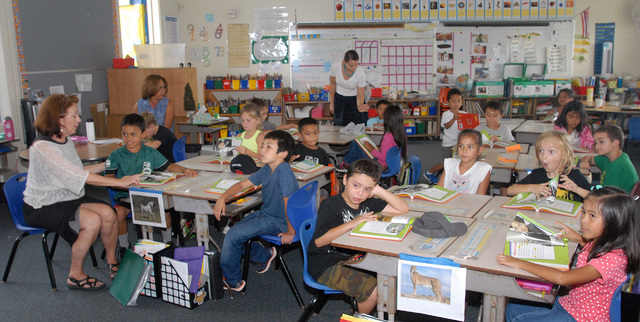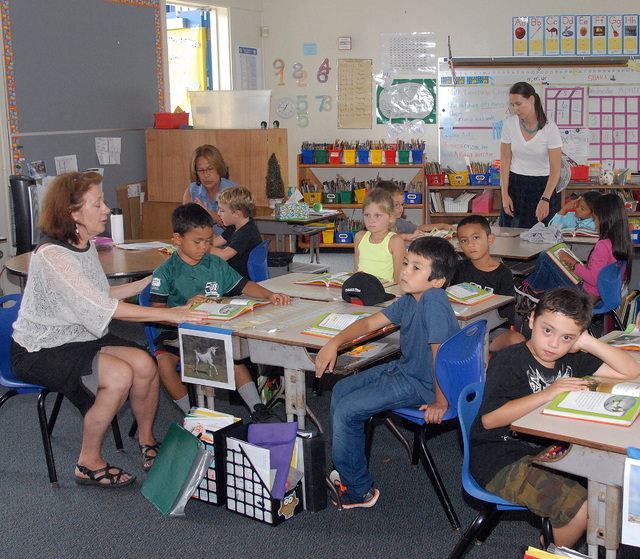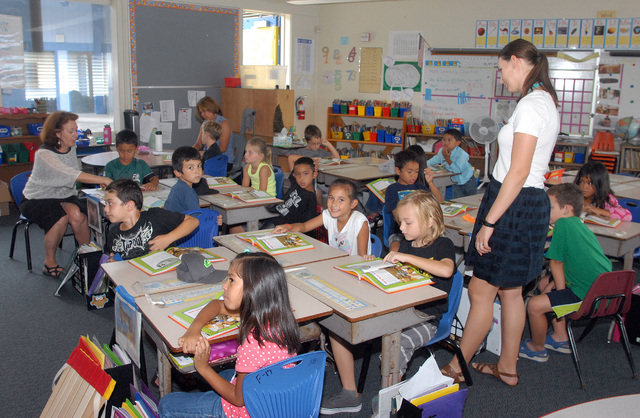State behind national average in incorporating special ed in classrooms
KAILUA-KONA — The Hawaii Department of Education has a serious problem.
“I think that presently, our special education students are struggling,” said Brian De Lima, a private practice attorney in Hilo and Vice Chairman of the Hawaii Board of Education. “I believe we are in a crisis.”
De Lima was referring to the issue of inclusion, which was a central topic at the Hawaii Board of Education meeting that convened earlier this month. Inclusion means teaching special education students the same curriculum in the same classrooms as general education students as frequently as that paradigm is tenable.
“Statistics and data suggest that it is best practice to have special education students receive their services in an inclusion setting,” De Lima said.
Inclusion is federally mandated under the Individuals with Disabilities Act (IDEA) and includes a clause that mandates children with disabilities be educated “to the maximum extent appropriate” with their peers in a general education setting.
The national LRE average of special education students spending at least 80 percent of their time learning in a general education classroom is 61.5 percent.
But the percentage of special education students in Hawaii spending that much time in general education classrooms is 36.9 percent.
Reasons for low numbers
President of the Hawaii State Teachers Association Corey Rosenlee said the problem is both perennial and systemic, boiling down to low pay and a heavy workload.
At the beginning of the 2015-16 school year, there were approximately 500 teacher vacancies in the state. Hawaii has one of the highest teacher-turnover rates in the country, meaning that number is likely to rise heading into next year.
“There are vacancies in almost every single teaching category,” Rosenlee said. “There is even a shortage of teachers in elementary education. I didn’t think that would ever happen.”
The cost of living in Hawaii is higher than in most areas throughout the United States. Teachers facing a similar cost of living in other districts around the country are earning more than they could in Hawaii.
Without enough teachers to fill the void, the state is left with no options except to staff open positions with substitute teachers or emergency hires. An emergency hire constitutes employing a person without a teaching license to teach a class. Rosenlee said that in 2013, roughly 60 percent of new hires in Hawaii were emergency hires.
“You wouldn’t let an unlicensed doctor operate on you,” Rosenlee said. “You wouldn’t let an unlicensed (hairstylist) cut your hair. But unlicensed teachers are teaching your children.”
The number of new hires that were also emergency hires dropped to 30 percent in 2015-16, but that’s not such good news as it may sound. That is because teacher vacancies also rose during that time, indicating that there weren’t more qualified teachers manning classrooms across the state, just fewer unqualified replacements willing to take the available jobs.
But throwing money at the problem likely won’t be enough. An influx of federal and state funds were spent to revamp services for special education students in Hawaii after the Felix Consent Decree — a settlement agreement approved by a federal court in 1994 following a lawsuit that was filed against the Governor, Superintendent of Education and Director of Health.
The consent decree mandated the development of specified programs and services for special education students and set hard deadlines for their implementation.
“Federal management gave a lot of attention to the issue, but even then, a lot of money wasn’t spent in the best way,” De Lima said. “My read of it is that having a blank check in itself does not solve problems persay.”
National shortage
One of those problems is a national shortage of special education teachers, which De Lima said has led to special education students struggling in almost every state across the nation.
Individual education plans — or IEPs — are required for each special education student, and Hawaii has no laws restricting the number of special education students to a classroom.
No restriction can be implemented until more special education teachers are hired, as some students would then be left with no IEP at all, which would be a violation of federal law. This, in turn, leads to the increase in workload for special education teachers to which Rosenlee referred.
Every IEP must be written by a certified special education teacher, so they must shoulder the IEP writing that the substantial number of subs and emergency hires employed as full-time teachers in Hawaii are ill equipped to handle.
Marlene Reedes, a special education teacher who teaches first grade in an inclusion classroom at Kealakehe Elementary School, said writing IEPs is painstaking, heavily compartmentalized work with specific deadlines. The writing of IEPs also carries with it legal implications.
The increased workload, along with low pay, further deincentivizes the depleting ranks of special education teachers in the United States to pursue their profession in Hawaii.
Thus on a day-to-day basis, several special needs students and general education students alike are recieving their education from unlicensed teachers. Underpaid, overworked special education teachers — many of whom must operate without educational assistants or trained therapists — then absorb the work that goes along with comprising IEPs for students not even in their classrooms.
“I work with a great team,” Reedes said. “I have a great general education teacher. I have a great educational assistant, and that is what makes our classroom work. It lessens the challenge. But if you don’t have that team, it definitely makes it harder.”
And of every group of people getting a raw deal, special education students are the ones who suffer the most.
“To modify curriculum takes a special skill and understanding,” De Lima said. “You want to make sure that the delivery of (specialized) services is meaningful and productive. That requires adequate training of all people involved in the coordination of those services.”
But obtaining trained, certified special education teachers — not to mention educational assistants, occupational therapists and speech therapists — has been trumped by Hawaii’s need to get any qualified adult whatsoever into all the empty classrooms.
De Lima, the father of a daughter with special needs who was educated in Hawaii, said that he’s noticed frustration in the community that mirrored his own as his daughter was growing up. It’s why he got involved with the Board of Education in the first place.
“Every month, I receive a complaint from a parent who is experiencing a problem with a principal they believe is being insensitive to their situation,” De Lima said. “There is this constant struggle of maybe a lack of empathy that may exist in a such a large system.”
De Lima’s term on the board will end on June 30. He said he has seen a commitment from departmental leadership to address this issue, in part as a strategy to close what he characterized as a wide gap between the state’s highest and lowest performing students. More attention to special education should produce that effect.
He added that the department has coordinated with local universities to hire more certified special education teachers and to create more incentives to go into the field. It has also attended several mainland recruiting sessions in an effort to get qualified bodies in the classroom so that thousands of students don’t end up, as Rosenlee put it, “staring at empty whiteboards.”
But the problem complicated and progress remains slow. Still, De Lima has hope.
“I do not sense any insincerity from those who are working on the issue,” De Lima said. “We can only go one way, and that is up.”






